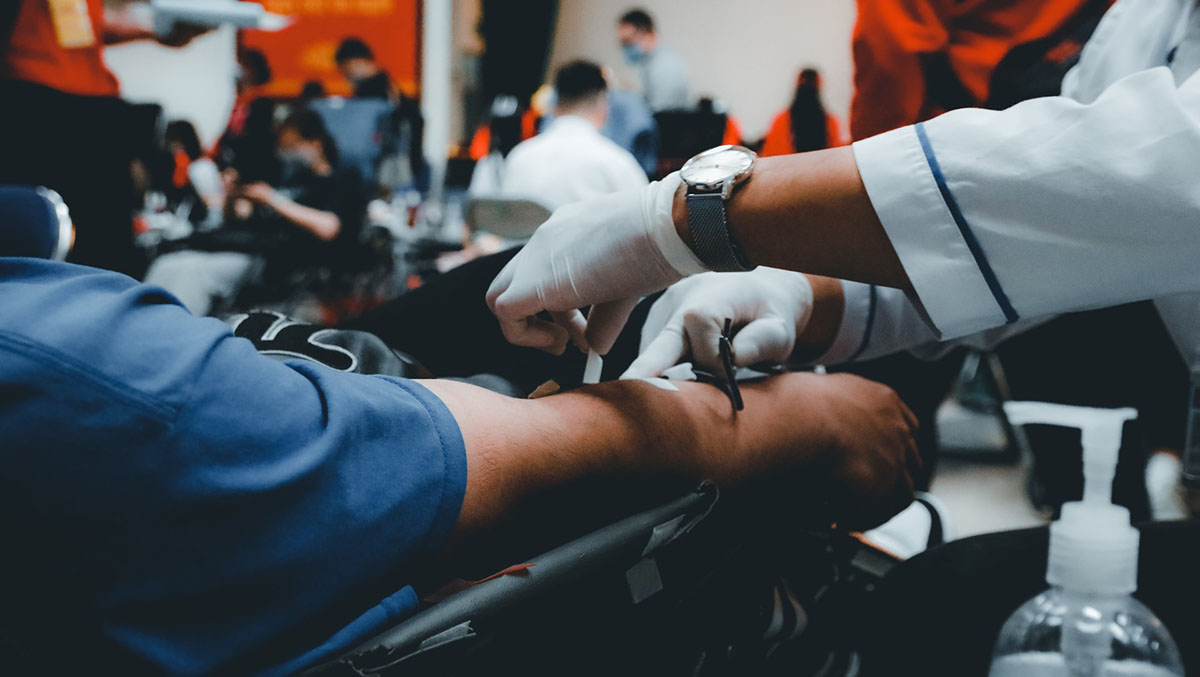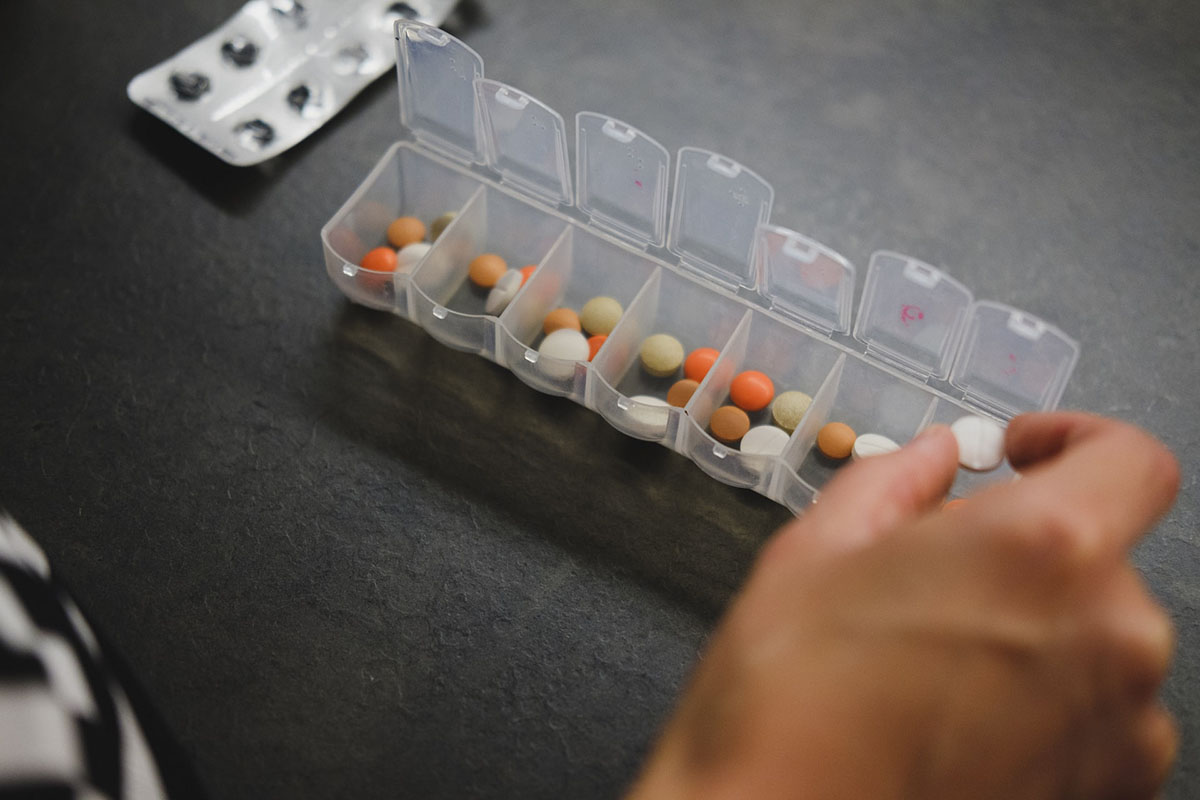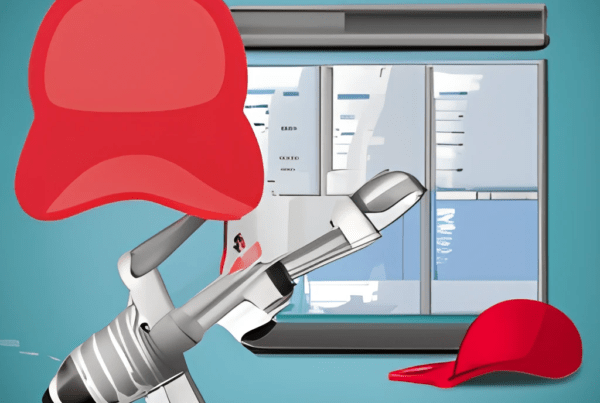Do you know how to improve patient retention in clinical trials?
It’s well known that some patients who enroll in clinical trials don’t stay until the end of the clinical trial. Sometimes, this is because they die or develop an adverse reaction that prevents them from finishing the trial. But other times, it’s because they simply drop out of the research study before their designated end date.
That puts their health at risk since they could miss out on potential benefits while also potentially exposing them to risks they were not aware of beforehand. However, there are strategies you can take in order to improve patient retention in clinical trials and make sure that your study participants finish the trials on time and unscathed.
This article is for:
- Clinical trial coordinators and investigators seeking actionable strategies to mitigate patient dropout and improve retention.
- Study sponsors and research organizations interested in optimizing patient engagement to maximize study success.
- Healthcare professionals involved in patient recruitment and retention efforts within clinical research settings.
What is Patient Retention in Clinical Trials?
Patient retention in clinical trials is keeping patients who have signed up for a clinical trial until the completion of all stages. Dropouts are when patients who have signed up for a clinical trial drop out of it before its completion. Patient retention strategies aim to improve patient retention and patient satisfaction. Your clinical trial team should account for expected dropout rates and consider different strategies that can be implemented on a daily basis to improve clinical trial patient retention.
The Significance of Patient Retention
Patient retention in clinical trials is a highly relevant and important topic because it’s considered one of several quality measures. A poorly executed study with a high rate of dropouts may give out false results with very little significance due to improper patient-to-result comparisons. Making sure that patient retention rates are high should be a top priority for any trial site. Newer versions of some commercial Electronic Trial Master Files can calculate expected dropout rates and list different strategies that can be implemented on a daily basis to improve clinical trial patient retention.
Impact on Funding & Strategies
Having poor patient retention rates will also cause trials to lose funding as it’s a major setback for all parties involved and makes a lot of money wasted from the initial costs of running the trial till completion. Patient retention strategies need to be implemented that could save thousands in funding and give vital insights on different ways how to improve patient retention in clinical trials.
Clinical Trials Patient Retention: Why Does It Matter?
When patients leave a clinical trial early for any reason, that leaves a spot open in the trial. This spot could be filled by another patient, but if that patient doesn’t show up, then there’s still an empty spot on your study. Over time, these empty spots add up and can significantly impact a clinical trial’s results. A study might indicate that a new medication is working well when it really isn’t because so many patients dropped out.
The main consideration of clinical trials patient retention is that you will lose valuable data on patients who drop out early. You won’t know if what you are giving them works or not. Patients who stay with your clinical trial can provide data to prove how effective your new treatment is over time. Patient retention also shows that patients believe in your product and want to see it succeed, as opposed to leaving because they don’t want to use it any longer.
Retaining patients in clinical trials is crucial if you want to get results. Those who drop out early on in a trial aren’t just leaving it – they are also taking part of your research with them, making it more difficult for you to obtain results for your study. Therefore, you want to keep patients enrolled as long as possible in order to get accurate data from them.
Understanding & Addressing Premature Patient Dropouts
You may consider reaching out to patients who have prematurely dropped out of the clinical trial to understand why they left. Once you have an idea of which patients are leaving your study prematurely, you can try to address these issues and reduce their number as much as possible.
Managing Different Reasons for Patient Dropout
If a lot of patients are dropping out due to adverse effects or because they simply don’t agree with what they’re doing anymore, then there’s not much that you can do about it, and it might be best for them to leave at that point. However, if most people drop out due to logistics or because they want to continue taking part in other studies instead of yours, then you may want to consider adjusting your clinical trial to address their concerns.
Enhancing Patient Engagement & Retention
As mentioned above, one way that has worked for some clinical trials is including the patients on a message board that is dedicated to the clinical trial. Here they can chat about studies with other people who are also taking part in them. This can give them an extra incentive to stick around until completion, as well as provide them with a good forum for getting answers from others who have taken part in similar studies before. They can discuss reasons why they entered the trial in the first place as well as what is keeping them there. Having that camaraderie can help encourage patients to continue the trial.
Importance of Patient Retention in Clinical Trials
What happens if too many patients drop out of a clinical trial? It could be a result of poor study design. Maybe you don’t have enough patients in your trial to start with, or you might be testing a treatment that’s simply not effective. Alternatively, it could be due to poor patient selection; maybe your clinical trial attracts patients who aren’t well-suited for whatever it is you’re testing. If you think your results are bogus because of low retention rates, don’t rush to blame on patients—look at your own data first.
Ensuring Data Integrity
One important function of patient retention in clinical trials is to ensure that your trial results aren’t compromised. Results may be inaccurate if too many patients don’t participate or drop out, or if too few patients are included in the first place. Although it can be difficult to determine whether your data is good enough, you may want to review past studies using similar treatments and compare them with yours to see whether patient retention rates have been as high as they should be.
Impact on Data Interpretation
It’s important to keep enough patients enrolled for long enough to generate stable data, and if you don’t then you risk biasing your trial’s results. If too many patients drop out, it can make your study difficult to interpret because they may have done so due to your treatment—for example, by getting sicker or showing signs of a bad reaction.
Who is Responsible for Patient Retention in Clinical Trials?
By now, most clinical trial professionals know that one of their main jobs is to keep patients in trials. However, many are unsure of exactly whose responsibility it is to see that a trial continues as planned and on schedule.
At first glance, it would seem that patients are responsible for completing clinical trials. However, patient retention is really a team effort. Though most patients wish to continue with their treatment protocol and complete their studies, they can’t do it without help from others in many different positions – and not just other members of their care team. Patient retention in clinical trials relies on professionals such as doctors, nurses, drug representatives, and case managers to ensure a smooth experience for each patient on each trial!
Having an interested, informed patient is key to patient retention in clinical trials. However, that’s not all that you need. Healthcare professionals can provide further valuable assistance in keeping patients engaged with their studies and eager to continue! If healthcare professionals understand why their role is important – and how they can affect clinical trial patient retention – they’ll likely be more motivated to do everything they can to help patients feel a sense of commitment and motivation towards continuing their trial treatment.
How to Recruit Patients to Increase Patient Retention in Clinical Trials
Most clinical trials work through medical centers and health providers who typically recruit new patients for trials. These physicians tend to be busy and under a lot of pressure from insurance companies and HMOs, so they may not always have time to think about recruiting for clinical trials.
Still, there are ways that doctors can improve patient retention in clinical trials by improving their recruitment tactics:
- Make sure your practice is ready to accept patients for the clinical trial and be able to address common questions about it. You may have an FAQ pamphlet for them to view or a web page that they can go to for more information.
- Doctors should ensure that their facilities are set up appropriately before recruiting begins. This means having written informed consent protocols in place, being able to discuss with potential participants exactly what each trial entails (i.e., what drugs will be used), having proper space available, etc.
Physicians should also recognize that patient retention in clinical trials often requires more than a quick phone call to make an appointment. Sometimes, physicians don’t have time for follow-up calls or lab work. If a clinical trial staff member has already done extensive screening and research about potential participants before presenting a doctor with possible recruits, though, doctors are likely to accept new patients at a higher rate.
Additionally, doctors will usually find it easier to recruit new patients if they offer their own incentives for participating in trials. This could be as simple as paying your patients $50 per month or offering them monthly lottery tickets. Anything that makes research participation feel like less of an inconvenience can increase patient retention in clinical trials by convincing more people to sign up.
Use Data Analytics to Improve Patient Retention
Analyzing Dropout Patterns
If you have a large sample size, and a high patient dropout rate in your clinical trial, use data analytics to figure out what exactly causes them to drop out. Find out if there is a correlation between a specific stage of treatment and dropping out, or if it’s something like side effects.
Tailoring Intervention Strategies
You can then come up with an intervention plan based on these findings. There are many other tools that can be used to improve patient retention in clinical trials as well. Your clinical trial might be able to benefit from some of the solutions listed here or you may need to brainstorm with your team on ways to help patients who have dropped out of your trial. Consider sending out a survey to those who have dropped out to gather information on why they left.
Addressing Individual Concerns
People have their own reasons for wanting or needing treatment, so don’t be too quick to judge them. Find out what exactly is bothering them, then try your best to help resolve their concerns. You can also use your intake data to help find patients that are similar to those who are staying in the study longer versus those who are leaving earlier to find new patients that are more similar to those who are staying in the study.
Although it’s important to improve patient retention in clinical trials, you shouldn’t solely rely on technology to solve all of your problems. Make sure that you take time to look at issues from a different perspective or talk things over with someone who has worked in clinical trials before.
Proactive Issue Management
Try not to let any issue get out of hand, as it can be costly for both you and your patients. Your data may tell you something about patient dropout, but don’t forget what got you there in the first place. Use data analytics when appropriate and use common sense when necessary.
Clinical Trials Patient Retention: Closing Thoughts
Patient retention in clinical trials is an important topic to review. You can use some of the methods outlined in this article to help improve patient retention in your current and future clinical trials.
Here are some key takeaways to consider:
- Patient retention in clinical trials is important because it ensures that the trial results are accurate and reliable.
- Patients drop out of clinical trials for a variety of reasons, including side effects, financial burdens, and logistical challenges.
- There are a number of strategies that can be used to improve patient retention in clinical trials, such as providing financial assistance, simplifying scheduling, and fostering a supportive community.
- It is important to understand the reasons why patients drop out of clinical trials in order to develop effective retention strategies.
- Patient retention is a complex issue, but it is essential for the success of clinical trials.
If you start a clinical trial and patients begin to drop out of it, what effect does that have on your data? One way to assess patient retention is by looking at your time-to-event data. If you have time-to-event data available for your study, you can use that information to understand how many patients dropped out over a certain amount of time. When plotted on a graph, these results can be helpful for understanding if patient retention has increased or decreased from month to month.
3 Reasons Why Patients Drop Out of Clinical Trials
Lack of Approved Treatment
One common reason for patient dropout is the availability of information about a new treatment that hasn’t been approved yet. Patients may opt to pursue this alternative instead of remaining in the clinical trial.
Adverse Side Effects
The occurrence of adverse side effects can lead patients to discontinue their participation in clinical trials. When the side effects become overwhelming or intolerable, patients may decide to withdraw from the study.
Non-Adherence to Protocol
Some patients may discontinue their involvement in clinical trials due to non-adherence to the protocol. This could involve missing appointments, forgetting to pick up medications, or not following the prescribed regimen as instructed by the trial protocol.
Regulatory Implications
Because clinical trials have clear guidelines for patient dropout rates, such as those set by The Food and Drug Administration (FDA), researchers can also be penalized for too many patients dropping out of their trial. Patient retention in clinical trials is a major issue that must be addressed to keep positive progress going.
Regulatory Guidelines & Patient Experience
Treatment & Placebo
The Food and Drug Administration (FDA) has set guidelines for patient dropout rates in clinical trials. The FDA’s goal is to ensure that all participants in a trial receive effective treatment, but sometimes patients may drop out of clinical trials because they are given a placebo. If a placebo is being used, patients will have no side effects or improvement and may become frustrated with what seems like pointless participation.
Impact on Clinical Trial Success
Patient retention is one of several factors that can affect clinical trial success, including patient satisfaction. Unfortunately, patient retention in clinical trials often has no single solution. However, there are many strategies to help improve patients’ completion of clinical trials.
Multifaceted Nature of Retention
However, there are many strategies to help improve patients’ completion of clinical trials. Patient retention is influenced by a multitude of factors, including communication, patient education, and addressing individual needs. These strategies can collectively contribute to enhancing the overall patient experience and increasing the likelihood of trial completion.
How to Improve Clinical Trial Retention
Clinical trials play a pivotal role in advancing medicine. However, retaining patients throughout a trial can sometimes be challenging. Below are some strategies to enhance retention rates:
Raising Awareness Before the Sign-Up
Understanding the trial they’re signing up for can influence a participant’s commitment to see it through to the end.
Utilize Clinic and Hospital Spaces
Placing posters and informational pamphlets in visible areas can reach potential participants who frequent these places.
Embrace Social Media Platforms
Advertisements and informational campaigns on platforms such as Facebook and Twitter can target a broader audience and spark interest.
Foster a Supportive Community
Patients often feel more comfortable and reassured when they can share their experiences and gain insights from peers.
Establish Patient Support Groups
These groups offer firsthand accounts of treatment experiences and can serve as a forum for patients to connect and discuss the trial.
Simplify & Clarify Scheduling
A clear timeline can alleviate patients’ anxieties and increase their commitment.
Predictable Treatment Schedules
Ensuring patients know when their treatments will occur and their overall timeline can enhance their confidence in the trial process.
Provide Flexible Financial Support
Addressing the financial aspects can also play a crucial role in retention.
Diverse Payment Options
Offering a range of payment methods or financial assistance ensures that every patient can find a suitable solution for their needs.
By implementing these strategies, clinical trial coordinators can not only improve retention rates but also enhance the overall patient experience, leading to more successful and reliable trial outcomes.
Retaining patients in clinical trials is crucial if you want to get results. Those who drop out early on in a trial aren’t just leaving it – they are also taking part of your research with them, making it more difficult for you to obtain results for your study. Therefore, you want to keep patients enrolled as long as possible in order to get accurate data from them.
Understanding & Addressing Premature Patient Dropouts
You may consider reaching out to patients who have prematurely dropped out of the clinical trial to understand why they left. Once you have an idea of which patients are leaving your study prematurely, you can try to address these issues and reduce their number as much as possible.
Managing Different Reasons for Patient Dropout
If a lot of patients are dropping out due to adverse effects or because they simply don’t agree with what they’re doing anymore, then there’s not much that you can do about it, and it might be best for them to leave at that point. However, if most people drop out due to logistics or because they want to continue taking part in other studies instead of yours, then you may want to consider adjusting your clinical trial to address their concerns.
Enhancing Patient Engagement & Retention
As mentioned above, one way that has worked for some clinical trials is including the patients on a message board that is dedicated to the clinical trial. Here they can chat about studies with other people who are also taking part in them. This can give them an extra incentive to stick around until completion, as well as provide them with a good forum for getting answers from others who have taken part in similar studies before. They can discuss reasons why they entered the trial in the first place as well as what is keeping them there. Having that camaraderie can help encourage patients to continue the trial.
Importance of Patient Retention in Clinical Trials
What happens if too many patients drop out of a clinical trial? It could be a result of poor study design. Maybe you don’t have enough patients in your trial to start with, or you might be testing a treatment that’s simply not effective. Alternatively, it could be due to poor patient selection; maybe your clinical trial attracts patients who aren’t well-suited for whatever it is you’re testing. If you think your results are bogus because of low retention rates, don’t rush to blame on patients—look at your own data first.
Ensuring Data Integrity
One important function of patient retention in clinical trials is to ensure that your trial results aren’t compromised. Results may be inaccurate if too many patients don’t participate or drop out, or if too few patients are included in the first place. Although it can be difficult to determine whether your data is good enough, you may want to review past studies using similar treatments and compare them with yours to see whether patient retention rates have been as high as they should be.
Impact on Data Interpretation
It’s important to keep enough patients enrolled for long enough to generate stable data, and if you don’t then you risk biasing your trial’s results. If too many patients drop out, it can make your study difficult to interpret because they may have done so due to your treatment—for example, by getting sicker or showing signs of a bad reaction.
Who is Responsible for Patient Retention in Clinical Trials?
By now, most clinical trial professionals know that one of their main jobs is to keep patients in trials. However, many are unsure of exactly whose responsibility it is to see that a trial continues as planned and on schedule.
At first glance, it would seem that patients are responsible for completing clinical trials. However, patient retention is really a team effort. Though most patients wish to continue with their treatment protocol and complete their studies, they can’t do it without help from others in many different positions – and not just other members of their care team. Patient retention in clinical trials relies on professionals such as doctors, nurses, drug representatives, and case managers to ensure a smooth experience for each patient on each trial!
Having an interested, informed patient is key to patient retention in clinical trials. However, that’s not all that you need. Healthcare professionals can provide further valuable assistance in keeping patients engaged with their studies and eager to continue! If healthcare professionals understand why their role is important – and how they can affect clinical trial patient retention – they’ll likely be more motivated to do everything they can to help patients feel a sense of commitment and motivation towards continuing their trial treatment.
How to Recruit Patients to Increase Patient Retention in Clinical Trials
Most clinical trials work through medical centers and health providers who typically recruit new patients for trials. These physicians tend to be busy and under a lot of pressure from insurance companies and HMOs, so they may not always have time to think about recruiting for clinical trials.
Still, there are ways that doctors can improve patient retention in clinical trials by improving their recruitment tactics:
- Make sure your practice is ready to accept patients for the clinical trial and be able to address common questions about it. You may have an FAQ pamphlet for them to view or a web page that they can go to for more information.
- Doctors should ensure that their facilities are set up appropriately before recruiting begins. This means having written informed consent protocols in place, being able to discuss with potential participants exactly what each trial entails (i.e., what drugs will be used), having proper space available, etc.
Physicians should also recognize that patient retention in clinical trials often requires more than a quick phone call to make an appointment. Sometimes, physicians don’t have time for follow-up calls or lab work. If a clinical trial staff member has already done extensive screening and research about potential participants before presenting a doctor with possible recruits, though, doctors are likely to accept new patients at a higher rate.
Additionally, doctors will usually find it easier to recruit new patients if they offer their own incentives for participating in trials. This could be as simple as paying your patients $50 per month or offering them monthly lottery tickets. Anything that makes research participation feel like less of an inconvenience can increase patient retention in clinical trials by convincing more people to sign up.
Use Data Analytics to Improve Patient Retention
Analyzing Dropout Patterns
If you have a large sample size, and a high patient dropout rate in your clinical trial, use data analytics to figure out what exactly causes them to drop out. Find out if there is a correlation between a specific stage of treatment and dropping out, or if it’s something like side effects.
Tailoring Intervention Strategies
You can then come up with an intervention plan based on these findings. There are many other tools that can be used to improve patient retention in clinical trials as well. Your clinical trial might be able to benefit from some of the solutions listed here or you may need to brainstorm with your team on ways to help patients who have dropped out of your trial. Consider sending out a survey to those who have dropped out to gather information on why they left.
Addressing Individual Concerns
People have their own reasons for wanting or needing treatment, so don’t be too quick to judge them. Find out what exactly is bothering them, then try your best to help resolve their concerns. You can also use your intake data to help find patients that are similar to those who are staying in the study longer versus those who are leaving earlier to find new patients that are more similar to those who are staying in the study.
Although it’s important to improve patient retention in clinical trials, you shouldn’t solely rely on technology to solve all of your problems. Make sure that you take time to look at issues from a different perspective or talk things over with someone who has worked in clinical trials before.
Proactive Issue Management
Try not to let any issue get out of hand, as it can be costly for both you and your patients. Your data may tell you something about patient dropout, but don’t forget what got you there in the first place. Use data analytics when appropriate and use common sense when necessary.
Clinical Trials Patient Retention: Closing Thoughts
Patient retention in clinical trials is an important topic to review. You can use some of the methods outlined in this article to help improve patient retention in your current and future clinical trials.
Here are some key takeaways to consider:
- Patient retention in clinical trials is important because it ensures that the trial results are accurate and reliable.
- Patients drop out of clinical trials for a variety of reasons, including side effects, financial burdens, and logistical challenges.
- There are a number of strategies that can be used to improve patient retention in clinical trials, such as providing financial assistance, simplifying scheduling, and fostering a supportive community.
- It is important to understand the reasons why patients drop out of clinical trials in order to develop effective retention strategies.
- Patient retention is a complex issue, but it is essential for the success of clinical trials.









